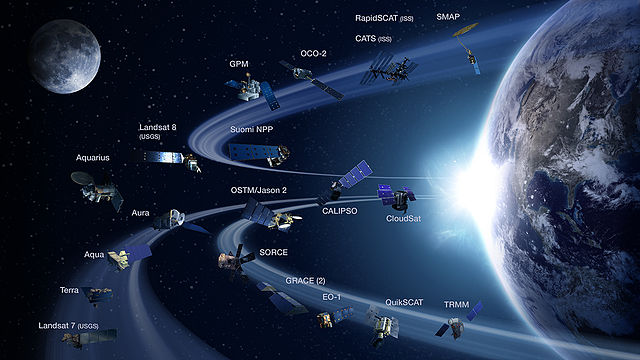Top Qs
Timeline
Chat
Perspective
NASA Earth Science
NASA research program From Wikipedia, the free encyclopedia
Remove ads
NASA Earth Science, formerly called NASA Earth Science Enterprise (ESE) and Mission To Planet Earth (MTPE),[1] is a NASA research program "to develop a scientific understanding of the Earth system and its response to natural and human-induced changes to enable improved prediction of climate, weather, and natural hazards for present and future generations".[2] Its director was Michael Freilich (2006–2019).


NASA supports research in the Earth sciences and, as part of its Earth Observing System (EOS), launches and maintains Earth observing satellites to monitor the state of the climate, atmospheric chemistry, ocean and land ecosystems. It was a NASA scientist, Dr. James Hansen, who first alerted the world to the dangers of global warming due to greenhouse gases emitted by human burning of fossil fuels. Earth Science research also provides the foundations of understanding for the search for extraterrestrial life through the NASA Astrobiology Institute (NAI), in which the focus is often on the extreme conditions for life to survive.[3]
Remove ads
References
Wikiwand - on
Seamless Wikipedia browsing. On steroids.
Remove ads
